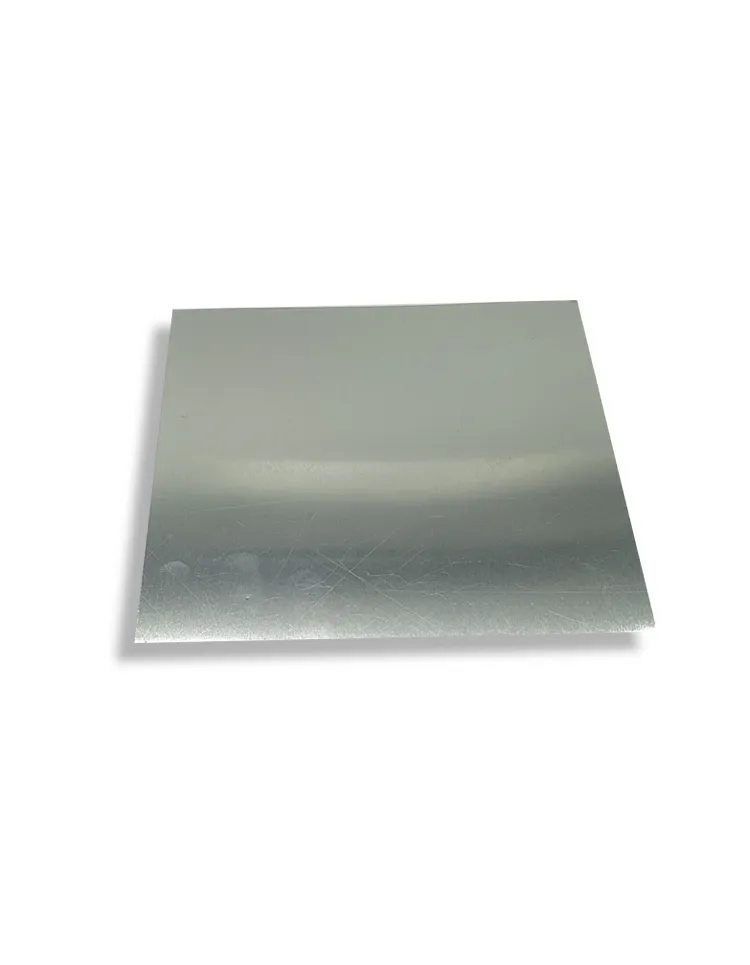Electrolytic tinplate sheet, as a metal material widely used in the modern packaging industry, is widely used in food, beverage, chemical and other industries due to its excellent anti-corrosion performance and good processing performance.
However, during the production and use process, electrolytic tinplate sheet will also have some common defects, which not only affect the product quality, but may also have adverse effects on the service life and safety of the end product. This article will discuss in detail the common defects of electrolytic tinplate sheet, the causes and solutions.

What are the common defects of electrolytic tinplate sheet?
1. Pinholes
Pinholes are common defects on the surface of electrolytic tinplate sheet, which are manifested as small and dense holes on the surface of the iron plate. These holes are small in diameter and shallow in depth, but they are numerous and widely distributed.
● Cause: The generation of pinholes is mainly due to uneven current density during the electrolysis process or impurities in the electrolyte, which leads to local corrosion on the surface of the iron plate. In addition, improper pretreatment of the iron plate surface or improper control during the tinning process can also lead to pinholes.
● Solution: Improve the electrolysis process to ensure uniform distribution of current density; improve the purity of the electrolyte and reduce the content of impurities; optimize the pretreatment process of the iron plate surface to ensure a clean and flat surface.
2. Blistering
Blistering refers to bubble-like defects formed on the surface of the electrolytic tinplate sheet during the tinning process due to the presence of gas or other substances. These bubbles may burst during heating or use, affecting the appearance and performance of the product.
● Cause: The main reason for blistering is that the electrolyte contains gas or impurities, or the temperature and time are improperly controlled during the tinning process, causing the gas to form bubbles in the coating.
● Solution: Optimize the formula and purity of the electrolyte to reduce the content of gas and impurities; strictly control the temperature and time during the tinning process to ensure the density of the coating.
3. Cracks
Cracks refer to fine cracks that appear on the surface of the electrolytic tinplate sheet or in the coating. These cracks may penetrate the coating and even extend to the substrate, affecting the strength and corrosion resistance of the product.
● Cause: The generation of cracks is usually related to the stress of the coating. During the tinning process, if the thickness of the coating is uneven or the cooling rate is too fast, stress concentration will occur, resulting in cracks.
● Solution: Optimize the tinning process to ensure uniform coating thickness; reasonably control the cooling rate to avoid stress concentration; repair products with cracks to prevent crack expansion.
4. Delamination
Delamination refers to the separation between the tinning layer of the electrolytic tinplate sheet and the substrate, resulting in the peeling of the coating. This defect not only affects the appearance, but also greatly reduces the corrosion resistance of the product.
● Reason: Delamination is usually caused by insufficient bonding between the coating and the substrate, which may be caused by improper surface treatment, lax tinning process control or uneven coating thickness.
● Solution: Optimize the surface treatment process to ensure the cleanliness of the substrate surface; strictly control the various parameters in the tinning process to ensure the bonding between the coating and the substrate; reprocess or scrap the products that have delamination.
5. Color difference
Color difference refers to the uneven color of the coating on the surface of the electrolytic tinplate sheet, which is manifested as different shades of color in different parts. This defect mainly affects the appearance quality of the product.
● Cause: The color difference is usually related to uneven electrolyte composition, uneven current density distribution or improper temperature and time control during tinning.
● Solution: Optimize the electrolyte formula to ensure uniform composition; improve the electrolysis process to ensure uniform distribution of current density; strictly control the temperature and time during tinning to ensure the consistency of coating color.

How to detect whether the electrolytic tinplate sheet has defects?
In order to ensure the quality of electrolytic tinplate sheet, scientific and effective detection methods are needed to detect its common defects. The following are several commonly used detection methods:
1. Visual inspection
Visual inspection is the most basic detection method. By observing the surface of the iron plate with the naked eye, obvious defects such as pinholes, blistering, cracks, etc. are identified. This method is simple and intuitive, but the detection accuracy of minor defects is limited.
2. Microscope inspection
Microscope inspection observes the surface of the iron plate through a high-power microscope, which can magnify small defects for easy identification and analysis. This method is suitable for detecting tiny defects such as pinholes and cracks.
3. Electron microscopic analysis
Electron microscopic analysis uses an electron microscope to observe and analyze the surface of the iron plate, which can obtain high-resolution images to help identify and analyze microstructural defects. This method is suitable for detailed analysis and research of defects.
4. Nondestructive testing
Nondestructive testing uses ultrasonic, X-ray and other technologies to detect the inside and surface of the iron plate, which can identify defects such as internal cracks and delamination. This method can be used for testing without destroying the iron plate, and is suitable for quality control and online testing during production.

How to improve the quality of electrolytic tinplate sheet?
In order to reduce the common defects of electrolytic tinplate sheet and improve product quality, the following measures can be taken:
1. Optimize the process
Optimize the electrolysis and tinning process, including the formulation of the electrolyte, the control of the current density, the regulation of the tinning temperature and time, etc., to ensure the stability and rationality of the process parameters.
2. Strictly control the quality of raw materials
Select high-quality raw materials, including high-purity iron plates and electrolytes, reduce the content of impurities and gases, and reduce the generation of defects from the source.
3. Strengthen equipment maintenance
Regularly inspect and maintain production equipment to ensure the normal operation of the equipment and accurate control of parameters, and reduce defects caused by equipment failure.
4. Strengthen quality control
Establish a complete quality control system, including raw material inspection, production process monitoring and finished product testing, to ensure stable and consistent product quality.
Conclusion
As an important industrial material, the quality of electrolytic tinplate sheet directly affects the performance and service life of the terminal product. By deeply analyzing the common defects of electrolytic tinplate sheet, mastering its causes and solutions, we can effectively improve product quality and meet market demand.
During the production process, it is necessary to continuously optimize the process, strictly control the quality of raw materials, strengthen equipment maintenance and quality control, and ensure the high quality and high reliability of electrolytic tinplate sheet products.

